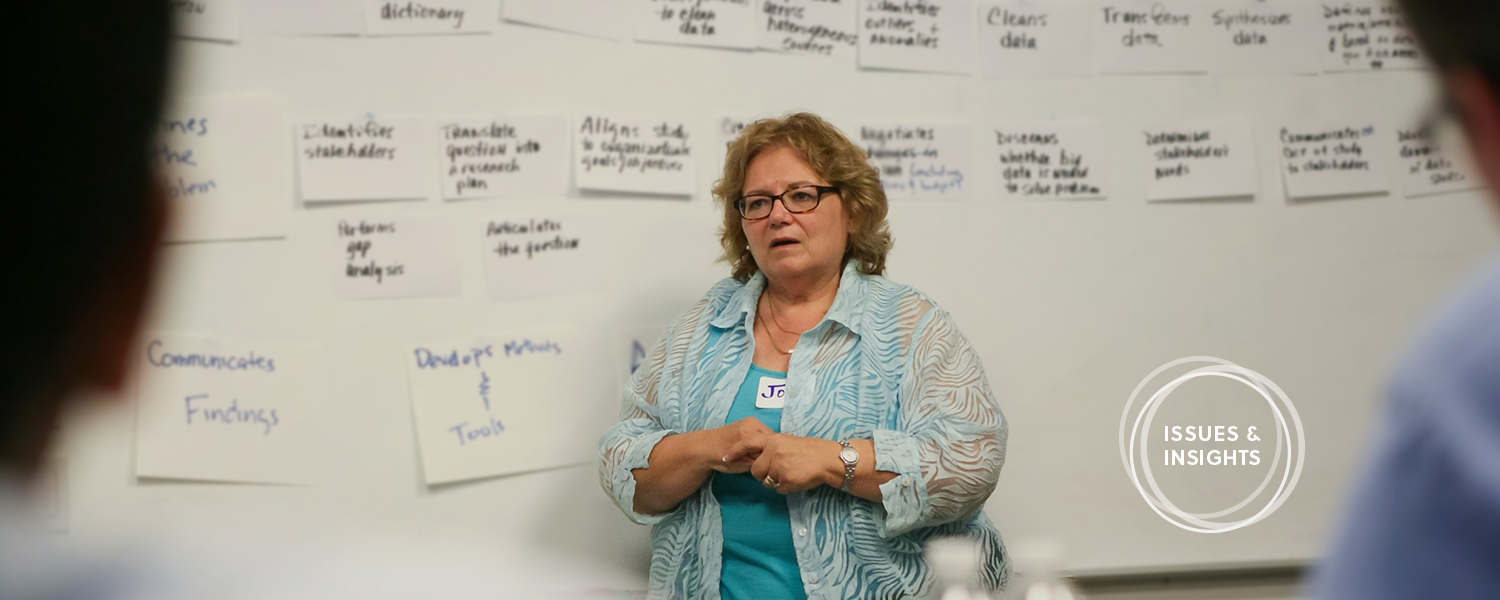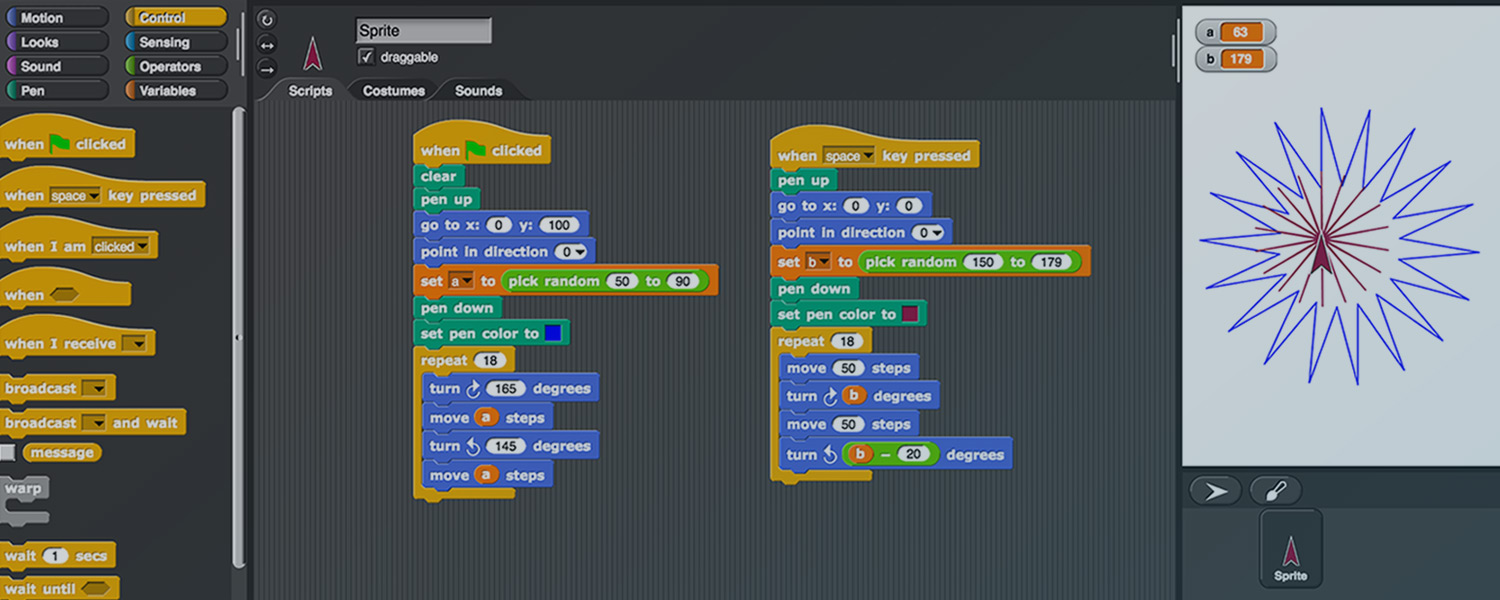
Joyce Malyn-Smith is helping to raise the profile of computational thinking in K–12 classrooms.
Success in computer programming, advanced manufacturing, or any of the hundreds of other new tech-heavy jobs emerging in the modern economy requires a core talent: the ability to take advantage of the powers of technology to solve complex problems. Generally called computational thinking, this skillset is in high demand.
As schools across the United States work to figure out how to best teach computational thinking, EDC’s Joyce Malyn-Smith wants to make sure that every student develops these skills. To this end, she has been working with educators and industry experts to define the specific knowledge and behaviors needed for success in a technology-driven world.
Malyn-Smith: Computational thinking is an evolving concept. I think of it as a person’s ability to think like a computer scientist and to use the power of technology to frame, understand, and solve complex problems of interest. Scientists, engineers, and others who are computational thinkers understand that computers are vital tools in discovery and innovation, and they harness the power of computers to create something they want. As such, programming, automation, analysis, and abstraction—where you pull a general concept out of a specific idea—are some of the concepts that are fundamental to computational thinking.
Malyn-Smith: Computational thinking uses technology to help us understand content more deeply. For example, a teacher introduces the topic of infection during a lesson on disease transmission among animals, and she uses computer models to understand the progression of an infectious disease in a population given different initial conditions. Given the right programs, students could also hypothesize about what would happen to different animal populations given different scenarios and then run simulations to see the results. The technology makes an abstract learning experience much more concrete, and these experiences lead to a better understanding of the science content.
"The real power of computational thinking comes from understanding how the use of technology can extend a person’s own thinking."
– Joyce Malyn-Smith
Malyn-Smith: There are certain things that all teachers can do to foster computational thinking skills in the classroom. Helping students learn how to break sophisticated problems into component parts is one thing. Helping them test, evaluate, refine their ideas, and find patterns among data—especially in math and science—are other ways. Even just using the technical language of computational thinking—words such as abstraction, model, and simulate—helps students grasp some fundamentally important ideas.
But the real power of computational thinking comes from understanding how the use of technology can extend a person’s own thinking. So it’s important for teachers to both introduce fundamental computer science concepts and offer students opportunities to use technologies as a means of thinking about and solving a problem. Questions like, “How might we use our computers, cell phones, or the Internet to help us learn more about this issue?” and “What kind of a program or app could we create to get the information we need?” help students see computers and hand-held devices as useful tools in problem solving, and these in turn provide a gateway to programming, coding, and advanced uses of technology.

Computational thinking skills are essential for careers in computer science and programming.
Malyn-Smith: Computational thinking is drawn from an understanding about how technology can help us formulate and solve problems. Students can develop computational thinking skills as they modify the technologies they are using—for example, using cheat codes in video games or changing a simple program in a robotics kit.
The actual discipline of computer science—where people design and develop the code, programs, and algorithms that run machines—is another, more advanced application of that skill set. You don’t have to be a computer scientist to benefit from having good computational thinking skills. Physicians who interpret sophisticated 3-D images, scientists who test hypotheses using large-scale data sets, and maintenance workers who care for green buildings can all use computational thinking to enhance their success, whether or not they ever write a single line of code.
Malyn-Smith: There are several reasons. First, it’s important for schools to prepare young people with computational thinking skills because these skills are generalizable—and desirable—across all sectors impacted by technology. People are more likely to succeed at work if they understand the technologies they use in the workplace.
Second, computational thinking is foundational to computer science careers. Computer scientists are computational thinkers with great power. By designing and developing the software and hardware used by scientists, engineers, and all other workers, computer scientists shape the limits and boundaries of creativity and innovation in every sector of society.
Third, computer science skills provide individuals with an unprecedented economic opportunity. We know that computer scientists are more highly paid than others with similar levels of education and training. By offering all students a foundation in computational thinking skills, we are enabling them and their families access to economic and social opportunities that otherwise may be out of reach.
Fourth, as a nation, investing in students’ computer science skills will make the difference between leading and following in a global economy driven by technology.
Not all students will become computer scientists. But whether they do or not, developing their computational thinking skills along with the traditional 3Rs will enhance their opportunities for success after they graduate. To do less will stand in their way.